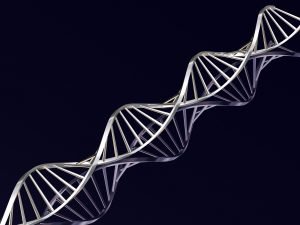Summary
Lactose intolerance is a digestive condition where the body cannot effectively break down or process lactose, a type of sugar found in milk and dairy products. This occurs due to a deficiency in lactase, an enzyme that helps digest lactose in the stomach. Without enough lactase, lactose remains undigested in the gut, leading to discomfort and digestive symptoms.
Although lactose intolerance is not considered a serious condition, consuming dairy products can lead to unpleasant symptoms for those affected. Common symptoms include excessive gas, diarrhea, bloating, abdominal pain or cramping, stomach rumbling, and weakness. The severity of these symptoms often depends on how much lactose the individual has consumed and their level of intolerance.
Lactose intolerance is often hereditary and can be present from birth if the genes responsible for lactase production are deficient. However, it can also develop later in life, particularly in people with other gastrointestinal disorders, such as celiac disease, which can damage the lining of the intestines and reduce lactase production. Although there is no cure for lactose intolerance, managing the condition is possible by limiting or avoiding lactose-containing foods, taking lactase supplements, and choosing lactose-free alternatives.
Table of Contents
Symptoms of Lactose Intolerance

A doctor may suspect lactose intolerance if the patient exhibits the following symptoms:
- Frequent gas. Excessive gas is common after consuming dairy due to undigested lactose fermenting in the intestines.
- Nausea or vomiting. Some individuals experience nausea or even vomiting shortly after consuming dairy products.
- Diarrhea. Undigested lactose draws water into the intestines, leading to loose stools.
- Bloating. The buildup of gas in the intestines can cause noticeable bloating and discomfort.
- Abdominal pain and cramps. The body’s response to undigested lactose often results in cramping and pain in the abdomen.
- Stomach rumbling. The digestive tract may make noticeable sounds as it reacts to lactose.
- Weakness. General discomfort from these symptoms can leave the individual feeling weak or fatigued.
The symptoms of lactose intolerance can be similar to those of inflammatory bowel disease, celiac disease, and irritable bowel syndrome. Therefore, consulting a doctor for an accurate diagnosis is essential.
Types of Lactose Intolerance

There are two main types of lactose intolerance, each with different causes:
- Primary lactose intolerance. This is the most common form of lactose intolerance and often runs in families. With primary lactose intolerance, lactase production naturally decreases with age, making it harder for the body to digest lactose over time. People with a family history of lactose intolerance are more likely to develop this condition.
- Secondary lactose intolerance. This type is less common and usually results from another digestive disorder, such as celiac disease, Crohn’s disease, or gastroenteritis. In these cases, inflammation or damage to the intestines can reduce lactase production, leading to lactose intolerance. Once the underlying condition is treated, lactase production may improve, and symptoms can lessen or resolve.
Understanding these types helps in managing lactose intolerance more effectively, as treatment may vary depending on whether the condition is genetic or related to an underlying illness.
Diagnostic Procedures for Lactose Intolerance
If lactose intolerance is suspected, healthcare providers can use several tests to diagnose it accurately. These diagnostic procedures help confirm whether the symptoms are due to lactose intolerance or another digestive condition. Here are the main methods used to diagnose lactose intolerance:
- Hydrogen breath test. This is one of the most common tests for lactose intolerance. The patient consumes a lactose-containing drink, and then breath samples are taken at intervals to measure hydrogen levels. Elevated hydrogen levels indicate undigested lactose in the intestines, confirming lactose intolerance.
- Lactose tolerance test. In this test, blood samples are taken after the patient drinks a lactose solution to measure blood glucose levels. If lactose is properly digested, glucose levels will rise; if not, it suggests lactose intolerance.
- Stool acidity test. This test is more commonly used for infants and young children. Undigested lactose produces lactic acid and other fatty acids, which can be detected in stool samples. A high level of these acids indicates lactose malabsorption.
- Elimination diet. Sometimes, a doctor may recommend temporarily removing lactose-containing foods from the diet to see if symptoms improve. If symptoms lessen when lactose is avoided and return when it’s reintroduced, this can help confirm lactose intolerance.
These tests provide a clear picture of how the body processes lactose, helping to diagnose lactose intolerance accurately. Consulting a healthcare provider is essential to select the appropriate test and rule out other digestive issues.
Complications of Untreated Lactose Intolerance
While lactose intolerance itself is not typically a serious condition, leaving it untreated can lead to various complications, especially if dairy continues to be a part of the diet. Here are some potential issues that can arise if lactose intolerance is unmanaged:
- Nutritional deficiencies. People with untreated lactose intolerance who avoid dairy without proper substitutes may miss out on essential nutrients like calcium, vitamin D, and protein, leading to deficiencies. This can increase the risk of osteoporosis, weak bones, and fractures over time.
- Chronic digestive discomfort. Continuing to consume lactose without treatment or dietary adjustments can lead to persistent symptoms like bloating, gas, diarrhea, and stomach pain. These symptoms can disrupt daily activities and affect overall quality of life.
- Weight loss and malnutrition. Frequent digestive discomfort and diarrhea can result in unintentional weight loss and malnutrition if dairy foods are consumed without lactase supplementation or suitable dietary adjustments.
- Increased risk of other digestive issues. Chronic digestive symptoms can place strain on the gastrointestinal system, potentially contributing to or exacerbating other conditions, such as irritable bowel syndrome (IBS).
- Reduced bone density. Since dairy is a primary source of calcium and vitamin D, avoiding it without replacing these nutrients can lead to lower bone density, especially in older adults, increasing the risk of osteoporosis.
Addressing lactose intolerance with dietary adjustments, lactose-free alternatives, and lactase supplements can help prevent these complications, supporting better digestive health and overall well-being.
Causes of Lactose Intolerance

Lactose intolerance occurs due to specific direct causes related to lactase production and intestinal health. Here are the main actual causes:
- Lactase enzyme deficiency. The primary cause of lactose intolerance is a direct deficiency of the enzyme lactase in the small intestine. Lactase is necessary to break down lactose, the sugar found in milk and dairy products, into simpler sugars that can be absorbed. Without adequate lactase, lactose remains undigested, leading to the symptoms of lactose intolerance.
- Genetic mutations affecting lactase production. In some cases, genetic mutations cause a reduction or cessation of lactase production from birth (congenital lactose intolerance) or progressively with age (developmental lactose intolerance). These mutations directly affect the body’s ability to produce lactase, leading to intolerance to lactose.
- Intestinal damage from other conditions. Certain digestive disorders, such as celiac disease and Crohn’s disease, can cause inflammation or damage to the lining of the small intestine, where lactase is produced. This damage reduces lactase levels, directly resulting in secondary lactose intolerance until the intestinal lining heals and lactase production can potentially resume.
- Effects of radiation therapy. Radiation therapy directed at the abdominal area can damage the cells lining the intestines, impairing lactase production. This damage may result in lactose intolerance, particularly if the therapy affects the small intestine.
These direct causes affect lactase production or the ability of the small intestine to process lactose, leading to lactose intolerance symptoms. Understanding these specific mechanisms is essential for effective diagnosis and management.
Prevention of Lactose Intolerance
Lactose intolerance cannot be prevented, especially if it’s due to inherited genetic factors. However, symptoms can be managed and minimized by following these practices:
- Avoid high-lactose foods. Limiting or avoiding foods with high lactose content can prevent symptoms. Common high-lactose foods include milk, heavy cream, condensed milk, evaporated milk, ice cream, cottage cheese, ricotta cheese, sour cream, and cheese spreads. Choosing lactose-free or dairy-free alternatives can be a helpful substitute.
- Read food labels carefully. Many processed foods contain hidden lactose, such as snacks, baked goods, candies, dry mixes, dried vegetables, and even infant formula. Make it a habit to read ingredient labels to check for lactose-containing ingredients. When in doubt, ask store employees for assistance in identifying lactose-free products.
- Avoid medications with lactose. Lactose is often used as a filler in medications, including white pills, certain birth control pills, and some medications for gas or stomach acid. If you’re unsure whether a medication contains lactose, consult a pharmacist, who can help you find lactose-free options or suggest suitable alternatives.
Following these guidelines can help reduce lactose intolerance symptoms and allow for more comfortable dietary and lifestyle choices.
Risk Factors for Lactose Intolerance
Lactose intolerance is often hereditary, but certain factors can increase the likelihood of developing this condition:
- Premature birth. Babies born prematurely are more likely to develop lactose intolerance, as lactase production in the intestines typically increases during the later stages of pregnancy.
- Ethnicity. People of African, Asian, Latino, and Native American descent have higher rates of lactose intolerance. This is due to genetic variations that affect lactase production, making it more common in these populations.
- Aging. Lactase production naturally decreases with age, which can lead to lactose intolerance developing in adulthood, even if it wasn’t present earlier in life.
- Intestinal conditions. Diseases that affect the intestines, such as bacterial overgrowth, celiac disease, and Crohn’s disease, can damage the lining of the small intestine, reducing lactase production and causing secondary lactose intolerance.
- Abdominal cancer treatments. Cancer treatments, such as radiation therapy to the abdominal area, can damage the intestines and affect lactase production, increasing the likelihood of lactose intolerance.
These factors can make some individuals more prone to developing lactose intolerance, especially as they age or face health conditions that impact intestinal function.
Lactose Intolerance FAQs
Lactose intolerance is a common digestive condition affecting people who have difficulty digesting lactose, the sugar found in milk and dairy products. This condition can lead to uncomfortable symptoms like bloating, gas, and diarrhea after consuming dairy. Here are some frequently asked questions about lactose intolerance, including its causes, symptoms, and ways to manage it.
- What is lactose intolerance?
Lactose intolerance is the inability to fully digest lactose, a sugar found in milk and dairy products, due to a deficiency of the enzyme lactase. Without enough lactase, lactose remains undigested in the intestines, causing digestive symptoms. - What are the symptoms of lactose intolerance?
Common symptoms include bloating, gas, diarrhea, stomach cramps, nausea, and stomach rumbling, which typically occur within a few hours of consuming lactose-containing foods. - What causes lactose intolerance?
Lactose intolerance is usually caused by a decrease in lactase enzyme production in the intestines, which can be due to genetics, age, or certain digestive conditions. Genetic factors, aging, premature birth, and intestinal disorders can all contribute to lower lactase levels. - Can lactose intolerance be cured?
There is currently no cure for lactose intolerance. However, symptoms can be managed by avoiding or limiting lactose-containing foods, using lactase supplements, or choosing lactose-free products. - Is lactose intolerance the same as a milk allergy?
No, lactose intolerance is not an allergy. It is a digestive issue related to lactose digestion, whereas a milk allergy is an immune response to proteins in milk, which can cause serious allergic reactions. - Are there any tests for lactose intolerance?
Yes, common tests include the hydrogen breath test and the lactose tolerance test, both of which can confirm lactose intolerance by measuring the body’s response to lactose consumption. - Can lactose intolerance develop later in life?
Yes, lactase production often decreases with age, and many people develop lactose intolerance in adulthood, even if they had no issues with dairy in their younger years. - What foods should be avoided with lactose intolerance?
Foods high in lactose, such as milk, cheese, cream, ice cream, and yogurt, should be limited or avoided. Some processed foods and medications may also contain lactose as an ingredient. - Are there treatments or supplements for lactose intolerance?
Lactase enzyme supplements can help break down lactose when taken before consuming dairy. Many people also use lactose-free dairy alternatives or plant-based options to manage symptoms. - Can lactose intolerance be prevented?
Lactose intolerance cannot be prevented, particularly if it’s genetic. However, managing symptoms through dietary choices, lactase supplements, and reading food labels can help reduce discomfort.


